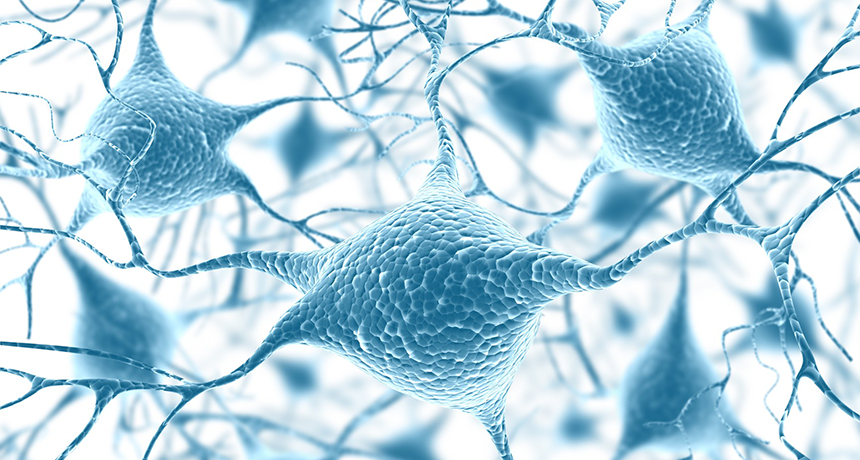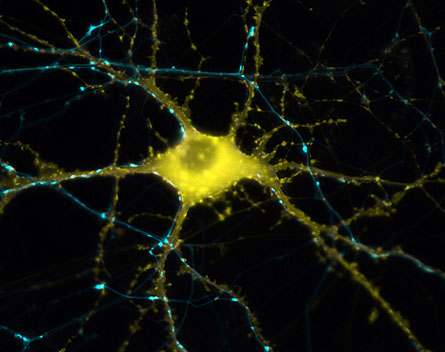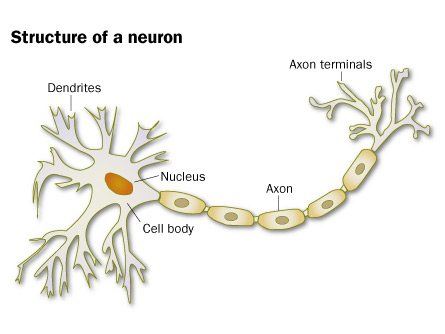Contemplating thought
Your brain is more complex than a computer, but the two are similar

This illustration shows how the billions of neurons in your brain are linked by a web of connections. Neurons interact through electrical connections similar to those in a computer.
KTSIMAGE/ISTOCKPHOTO
By Susan Gaidos
Think back to the first time you rode a bike or the last time you had ice cream for dessert. Now, imagine a perfect summer day. What’s going on in your noggin’ that allows you to remember, dream and think?

The human brain is amazing. It lets you remember the way to your friend’s house, and how to pedal your bike to get there. It can conjure up memories of the fish you saw while snorkeling and remind you to feed your goldfish at home. It even controls stuff you don’t have to think about, such as your heart rate, breathing and blinking.
In recent years, brain-imaging techniques such as functional magnetic resonance imaging (fMRI) have allowed scientists to watch the brain in action. Studies using fMRI show how different parts of the brain do different things, says neuroscientist Sam Wang, who studies the brain at Princeton University.
For example, one part of the brain, called the amygdala (ah-MIGG-duh-luh), handles emotional information, and another part of the brain, the prefrontal cortex, makes plans for the future. Yet another brain system, the cerebellum (SEHR-eh-BELL-um), helps control your movements and balance, while the hypothalamus (HI-poh-THAH-luh-muss) works to control your body’s temperature.
The brain contains other systems, too. Your hippocampus (HIP-poh-CAM-pus), for example, has the job of transferring information between short-term and long-term memory.
By working together, these systems let you think, remember, see, hear, smell, taste and touch. The goal of this teamwork is to get you through life.
Though the human brain is sometimes compared to a computer, it’s not one. It’s actually much more complex, Wang says.
Computers, for example, are designed to record everything perfectly. Rather than recording everything, the brain sorts through all the information taken in through the senses and decides what to hold on to. Because the brain does all this pre-sorting, things such as the pattern in your rug or sound of songbirds outside your window don’t constantly distract you.
The human brain can also do things that are in many ways faster and better than what any computer can do. For instance, you brain enables you recognize your friends — just from the way they walk — even from a distance. Computers can’t do that. Nor can a computer tell the difference between a cat and a dog, even though most toddlers can.
Though your brain is not a computer, they do share something in common: Both brains and computers use electrical signals to transmit information.
All fired up
Your brain doesn’t get its electrical energy from a socket in the wall, the way a computer does. Instead, it creates and sends electrical signals through specialized cells called neurons.

Information is passed along throughout the nervous system from neuron to neuron. The region where the information is transferred from one neuron to another is called the synapse. The synapse is actually a small gap located between two neurons. When information is transferred from one neuron to another, chemicals called neurotransmitters are released from the end of one neuron and travel across the synapse to reach the other neuron. There, these chemicals attach to special structures called receptors, which are located on the receiving neuron. This attachment creates a small electrical response within the receiving neuron.
These electrical signals race up and down the dendrites and axons at super speeds — up to several hundred feet per second. That’s fast enough to help you flee from a wild animal, or pull your hand away from a sizzling hot frying pan.
The human brain contains billions of neurons, and each individual neuron may receive information from thousands of other neurons. To keep the mental machinery running smoothly, the neurons specialize in doing certain tasks.
Sensory neurons, for example, carry messages from your eyes, ears and other sensory organs to your brain. They alert your brain when your nose picks up a whiff of cinnamon rolls coming from the kitchen. Motor neurons carry signals from your brain to your muscles and organs, enabling you to walk, talk, breathe and scramble to the kitchen to grab a hot roll.
Other types of neurons in the brain help in building social relationships. Mirror neurons, for example, are specialized cells that help you show empathy and understanding to others. They fire not only when you take action, but also when you watch others take action.
“Mirror neurons are active when I pick up a cup, and are also active when I watch someone else pick up a cup,” Wang says. “If you’ve ever winced when you watched a TV surgeon slice into a patient, you have your mirror neurons to thank.”
Some neurons have very specific tasks. Things and people that you see on a regular basis — your mother, your dog and even your favorite celebrities — all have a group of dedicated neurons that fire specifically in response to them.
By working together, all the various types of neurons help build our thoughts and actions, Wang says. “Thoughts are basically neurons like these acting together, being put together in patterns.”
Hold that thought
So, with all the various neurons racing through the different brain regions, how can a person think straight? Figuring out how the mind gives rise to thoughts, actions and emotions isn’t easy, and scientists are still working to put all the pieces together. Imaging studies such as those using fMRI have provided some clues.
For example, fMRI studies show that the prefrontal cortex acts as a kind of traffic cop, directing signals to and from different brain regions. Information that comes into the brain through eyes travels to the prefrontal cortex before it is distributed to other brain regions for additional processing. The same holds true for information coming from the other senses.
Other fMRI studies show that when people are sitting around just thinking about something, multiple brain regions are activated. When volunteers in a study were asked to imagine that they are looking at something, the parts of their brain that handle visual information lit up. “The same brain regions that are active during direct visual experience are also active by imagining a scene,” Wang says.
Scientists have also found that your memory plays a role in imagining new scenarios. In recent years, researchers have discovered that the brain regions used to store and retrieve memories are activated when envisioning the future. So all those facts and autobiographical data stored in your brain actually help you construct and predict possible future events.
When it comes to learning new information, one thing is certain: Practice makes perfect. When messages travel from neuron to neuron, over and over, the brain creates a connection between the neurons to form a memory. Once this happens, processing and recalling information becomes easier.
This holds true whether you are trying to learn a new language or learn a new dance move, Wang says. “Memory formation requires multiple steps,” he says. “Once an initial idea or motion is laid down, it must be reinforced both by repetitions and recall.”
Allowing time for rest breaks also aids learning. That’s why spacing out your study time works better than trying to cram information all at once. Wang says one possible reason for this is that breaks provide time for information consolidation.
Now that’s something to keep in mind.







